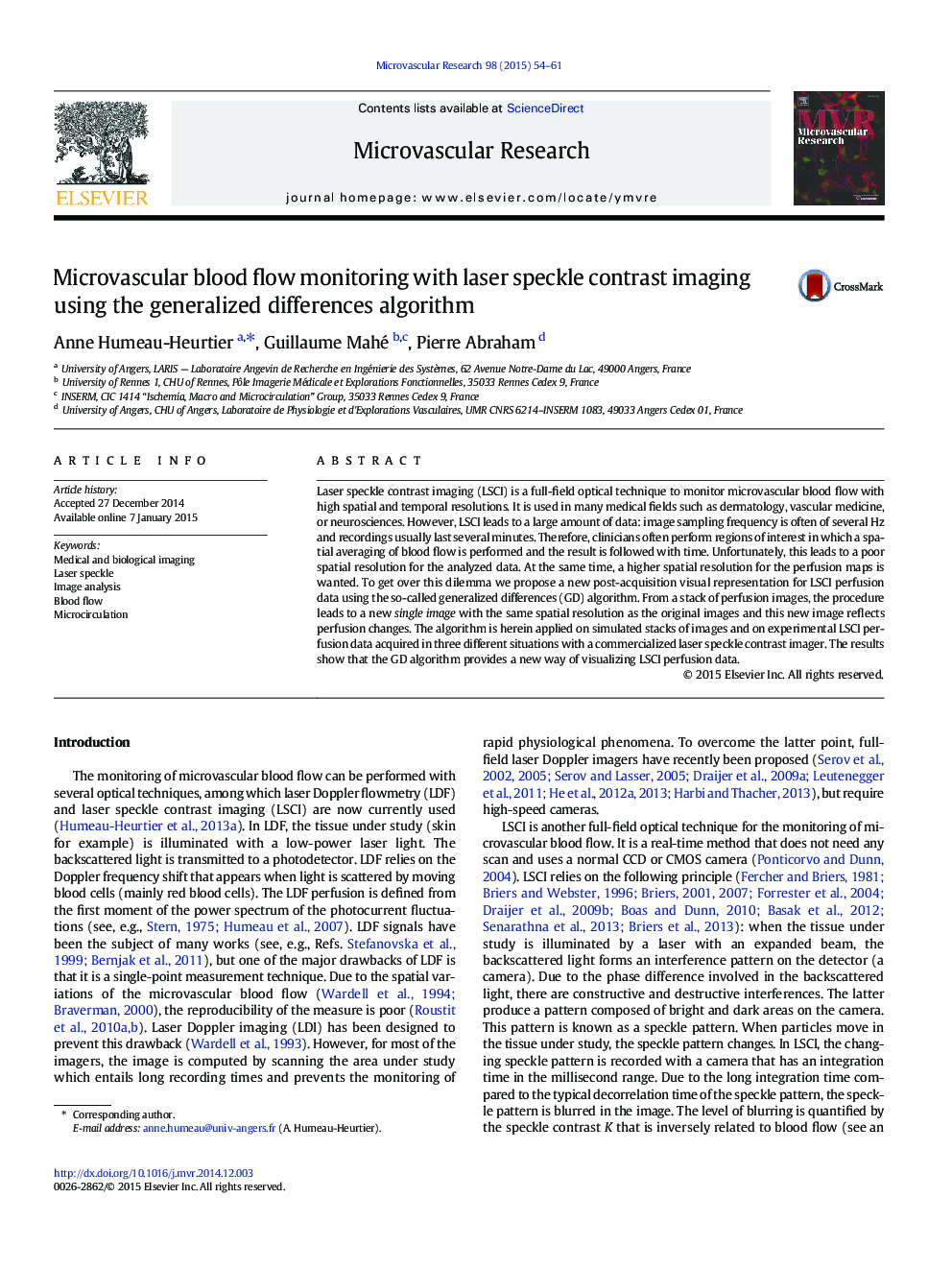| Article ID | Journal | Published Year | Pages | File Type |
|---|---|---|---|---|
| 1994815 | Microvascular Research | 2015 | 8 Pages |
•Laser speckle contrast imaging (LSCI) enables one to monitor microvascular perfusion.•Large amount of data are often recorded leading to a long process of analysis.•Spatial averaging is therefore often performed in regions of interest (ROI).•The spatial averaging reduces the spatial resolution of the images.•We propose a new visual representation of LSCI data using generalized differences.
Laser speckle contrast imaging (LSCI) is a full-field optical technique to monitor microvascular blood flow with high spatial and temporal resolutions. It is used in many medical fields such as dermatology, vascular medicine, or neurosciences. However, LSCI leads to a large amount of data: image sampling frequency is often of several Hz and recordings usually last several minutes. Therefore, clinicians often perform regions of interest in which a spatial averaging of blood flow is performed and the result is followed with time. Unfortunately, this leads to a poor spatial resolution for the analyzed data. At the same time, a higher spatial resolution for the perfusion maps is wanted. To get over this dilemma we propose a new post-acquisition visual representation for LSCI perfusion data using the so-called generalized differences (GD) algorithm. From a stack of perfusion images, the procedure leads to a new single image with the same spatial resolution as the original images and this new image reflects perfusion changes. The algorithm is herein applied on simulated stacks of images and on experimental LSCI perfusion data acquired in three different situations with a commercialized laser speckle contrast imager. The results show that the GD algorithm provides a new way of visualizing LSCI perfusion data.
